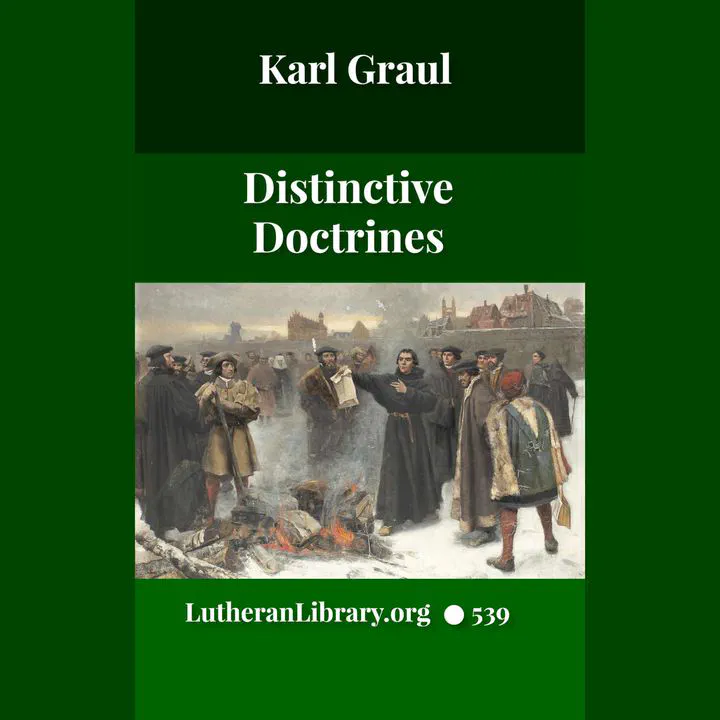Distinctive Doctrines by Karl Graul
14 Aug 2024··
2 min read
Graul-Karl

“It is necessary to assure ourselves of the inheritance we have received from our fathers in the faith. This inheritance must again and again be laid hold of within us, that it may not vanish from our hearts. This inheritance is the faith of our Church, the faith of Luther.” - From chapter 1
Level of Difficulty: Primer: No prior subject matter knowledge needed.
Contents
- Preface
- Contants
- Part 1: Of Christian Doctrine in General, and of the Evangelical Lutheran Church in Particular
- 1 Concerning the Use of the Pure Doctrine and Concerning the Confession of Faith
- 2 Luther’s Confession of Faith
- 3 The Harmony of Evangelical Doctrine
- Part 2: Distinctive Doctrines of the Different Christian Confessions
- 1 Distinctive Doctrines of the Romish Church
- 2 Distinctive Doctrines of the Greek Church
- 3 Reformed Distinctive Doctrines
- 4 Distinctive Doctrines of the Arminians
- 5 Distinctive Doctrines of the Socinians
- 6 Distinctive Doctrines of the Mennonites
- 7 Distinctive Doctrines of the Baptists and Neobaptists
- 8 Distinctive Doctrines of the Quakers
- 9 Distinctive Doctrines of the Swedenborgians
- 10 Distinctive Doctrines of the Irvingites
- 11 Distinctive Doctrines of the Mormons
- 12 Society for the Gathering of the People of God in Jerusalem
- 13 Distinctive Doctrines of the Moravians
- 14 Distinguishing Peculiarities of the Methodists
- Part 3: A Brief Summary of the Principal Unsound Tendencies in Christianity
- General Observations
- 1 The Lukewarm and Undecided Tendency
- 2 The Catholicizing Tendency
- 3 The Tendency of Dead Orthodoxy
- 4 The Pietistic Tendency
- 5 The Moravianizing Tendency
- 6 The Methodistic Tendency
- 7 The Mystic Tendency
Publication Information
- Lutheran Library edition first published: 2024
- Copyright: CC BY 4.0